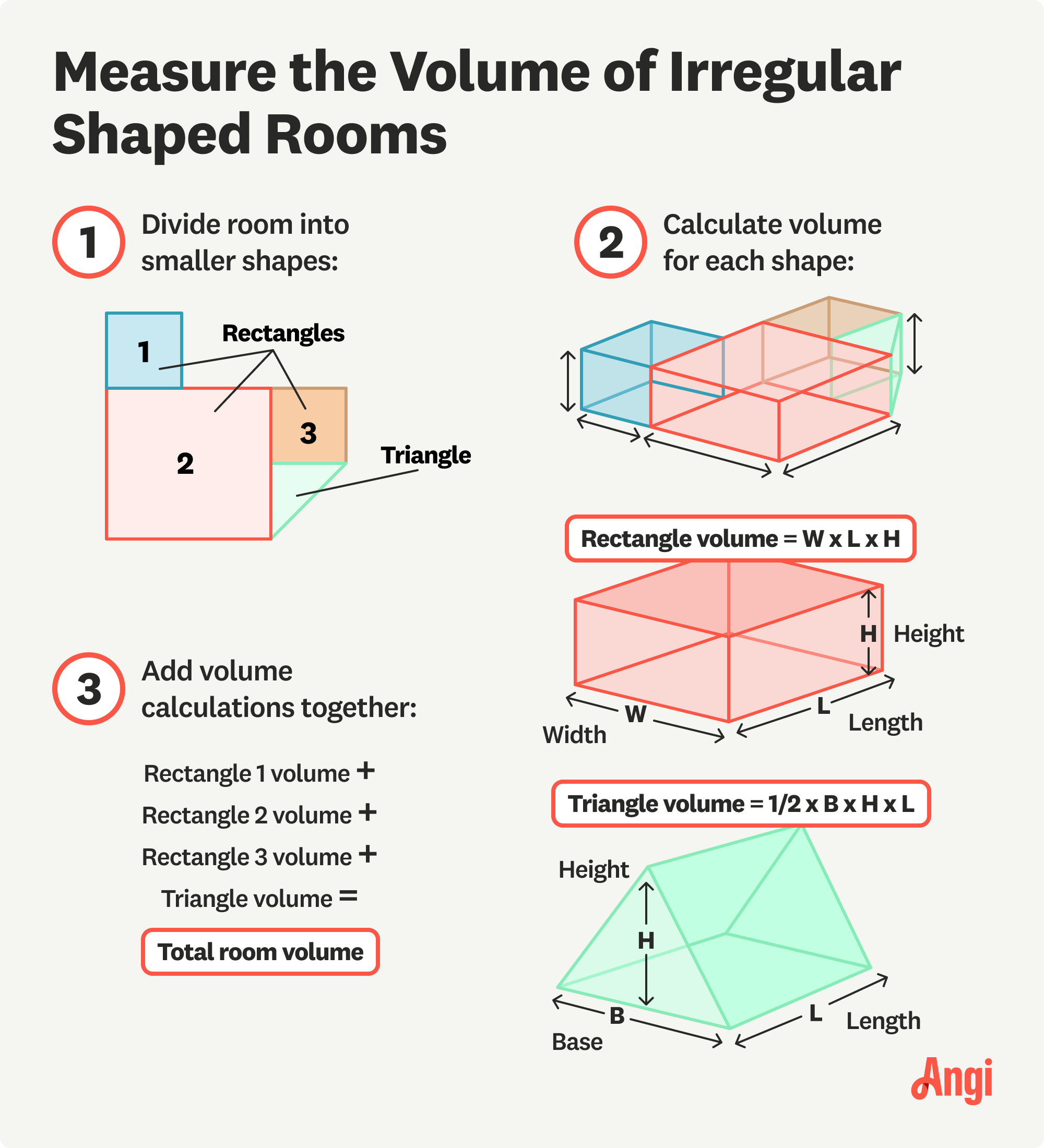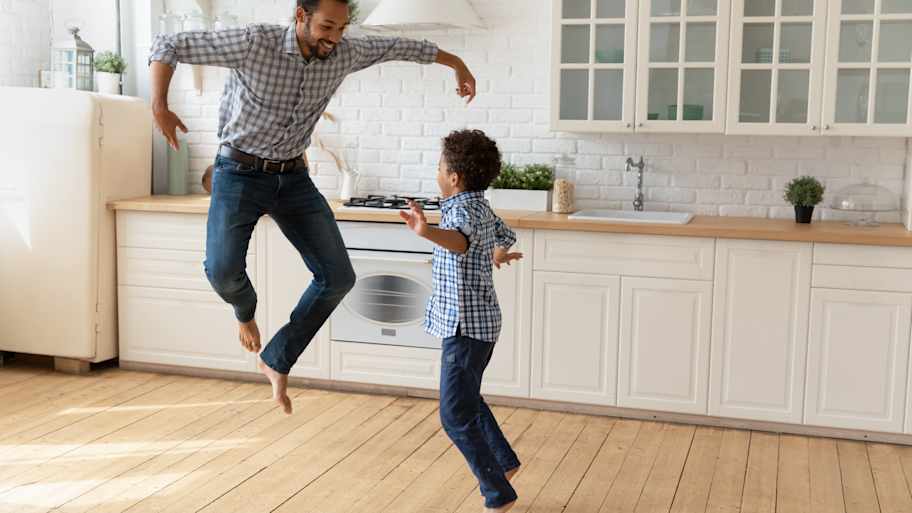
Furnace cleaning is an essential annual chore to keep your home safe. Find out common furnace cleaning costs by type and size of furnace with this guide.
Breathe easy in every room of your house


The number of air changes needed per hour varies by room and uses.
The ideal air change per hour range is between three and five.
Know the volume of space and cubic feet per minute value from your HVAC system.
Learning how to calculate air changes per hour (ACH) can help you get a grasp on your HVAC performance and help you improve your indoor air quality, if necessary. You'll need to know the cubic square feet of the area and the cubic feet per minute (CFM) of your HVAC system. Use this air changes per hour calculator to determine your current ACH and help you plan for changes.
The ideal ACH rate for typical homes is between three and five. That means the entire volume of air within the home is replaced three to five times each hour. However, rooms such as bathrooms, kitchens, and basements often require higher ACH rates to help reduce humidity and pollutants in the indoor air.
In addition to the regular ACH rates your HVAC is capable of, you can pay for the cost of a blower door test to determine the amount of air leakage your home has. The HVAC pro can include this value in their calculations when determining your home's overall ACH rate.
ACH rates can also apply to single rooms, stories, or individual portions of your home. The chart below shows the average square feet that various HVAC airflows can handle, assuming a healthy ACH of between three and five and a standard ceiling height.
| HVAC Airflow in Cubic Feet Per Minute | Area Volume in Square Feet |
|---|---|
| 40–70 | 100 |
| 80–140 | 200 |
| 200–340 | 500 |
| 400–670 | 1,000 |
To calculate ACH, you'll only need to know the volume of the space in question and the current or proposed CFM of the HVAC system. Alternatively, you can use the calculations the other way to determine if you need to increase your vent airflow or repair or replace your air conditioning system.
To determine ACH, measure the room or space area and multiply it by its height to determine its volume. Then, multiply the CFM of the HVAC system by 60 to represent the number of minutes in an hour. Divide that value by the volume of space. The result is your ACH rate.
Air Changes Per Hour = Cubic Feet Per Minute x 60 / Room Volume

To measure the volume of a space, room, or home, determine the square foot or area measurement and multiply it by its height. If you're calculating for multiple rooms, determine the volume measurement for each room and add them together for your total.
To measure the volume of irregularly shaped areas, divide the space into manageable chunks with rectangular, triangular, or semi-circle shapes to calculate the square footage. If the space has a sloped ceiling, use the average ceiling height as your value. Determine the average ceiling height by adding the lowest and highest values and dividing them by two.

To help maintain an adequate ACH level in your home, changing your furnace filter regularly is essential. Not only does doing so allow for smooth airflow, but it can also help prolong the lifespan of your HVAC system.
If you have concerns about the performance of your system, it's a good time to call an HVAC repair professional. When hiring your HVAC technician, keep in mind that local pros will know the best ACH levels specific to your location and your home.
Healthy air change per hour, or ACH, rates vary by room, usage, average occupancy, and volume. The minimum ACH that's considered healthy averaged throughout the home is 0.35. However, in rooms where humidity is an issue, such as bathrooms and kitchens, healthy ACH levels are between eight and 15.
The American Society of Heating, Refrigerating, and Air-Conditioning Engineers, or ASHRAE, sets the standard guidelines for air changes per hour in homes and businesses. The International Residential Code, or IRC, also sets ACH requirements for residences and bases those requirements off of ASHRAE standards plus climate specifics related to your location.
From average costs to expert advice, get all the answers you need to get your job done.

Furnace cleaning is an essential annual chore to keep your home safe. Find out common furnace cleaning costs by type and size of furnace with this guide.

A swamp cooler offers cool, moist air and costs less than an air conditioner. Learn about the costs of swamp coolers based on your home size and type of unit.

If your furnace is malfunctioning, it could be a faulty control board. Find out what a furnace control board replacement costs for parts, labor, and more.

This guide goes over the pros and cons of radiant floor heating, an energy-efficient alternative to traditional radiators and forced air heating systems.

Trying to choose between a MERV10 versus a MERV12 air filter? Compare filtration, airflow, and allergy protection to find the right fit for your home.

Discover the true ductless heat pump cost for your home. Learn about installation, factors affecting price, and ways to save in this comprehensive cost guide.